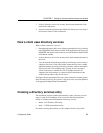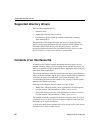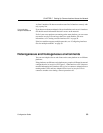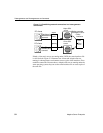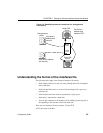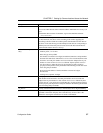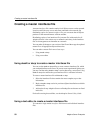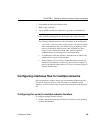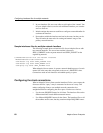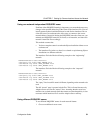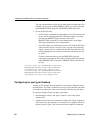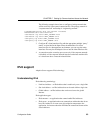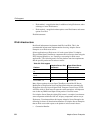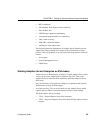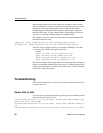
CHAPTER 5 Setting Up Communications Across the Network
Configuration Guide 59
1 Concatenate the individual interfaces files.
2 Make a copy of the file.
3 Use an ASCII text editor to modify the copy of the concatenated file.
Note When you manually edit an interfaces file, be sure that, for each
entry, each line following the first line begins with a <tab> character.
The following elements must be correct and unique in the resulting file:
• servername – each server entry in the interfaces file must be unique.
During the
srvbuild session, you had the choice of entering a server
name or accepting the default server name, SYBASE, for those
servers. If you accepted the default name, find any duplicate
SYBASE entries in your merged file, and rename them.
• A combination of the host machine’s network name or address and
Adaptive Server’s port or object number.
• If the original interfaces file was created when there was only one
machine on the network, its entries may have the word “loghost” in
place of the machine name (address). If loghost is present, replace it
with the machine name.
Configuring interfaces files for multiple networks
On some platforms, Adaptive Server can accommodate multiple networks.
This allows Adaptive Server to listen for clients over multiple network
interfaces. You must add an entry for each network interface to the interfaces
file.
Configuring the server for multiple network handlers
To configure multiple network listeners:
1 Define a unique host name for each network interface in your operating
system’s host database.



